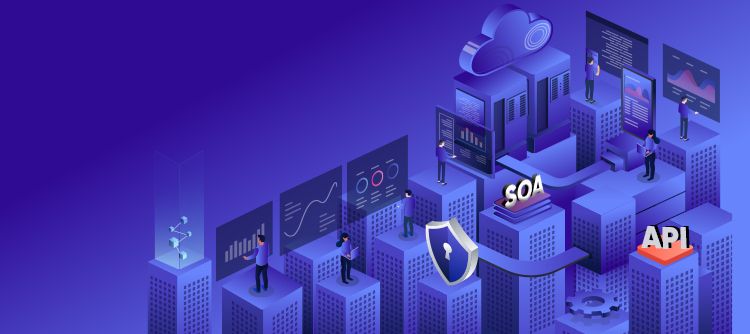
Subscribe to our Blog
We're committed to your privacy. SayOne uses the information you provide to us to contact you about our relevant content, products, and services. check out our privacy policy.

Real PradJanuary 6, 20236 min read

Generating table of contents...
If you have been exploring deeper into the differences, pros and cons of microservices vs. API, SOA vs. microservices, and which approach you would have to use for your business, you have come to the right place. In this blog post, we will attempt to list the key differences that will prove helpful to you so that you can make an easy choice.
APIs (application programming interfaces) allow different applications to communicate with one another and transfer information. SOA which expands to service oriented architecture is an architecture design approach that provides services to components via a communication protocol over a network. So we can use APIs to implement an SOA, which is a design pattern.
Both SOA and microservices are architecture design approaches and work to break applications into several components. Whereas SOA is an older and more outdated approach, microservices are the currently popular architecture design approach. When using microservices, applications are broken into several services with each service having independent data storage, unlike SOA.
Many businesses that were earlier functioning with SOA are now shifting to microservices. However, like SOA, APIs can be used to implement a microservices architecture design.
Microservices architecture works by breaking applications into services (small pieces of functionality) that can work independently and which can be leveraged across different applications. Some important differences between SOA vs. Microservices Architecture are:
Read our blog: Microservices Authorization 8 Best Practices
Microservices have:
The primary difference between microservices and API rest in the fact that whereas microservices is an approach to building a software application into smaller functionality components called services, APIs are parts of the application that helps one application communicate with another. So, APIs can be used to enable microservices ‘to talk to one another'. Both these together allow you to create effective business application packages.
APIs help to power both SOA and microservices. However, when do you choose the one that would suit your requirement?
You can choose APIs when you want to accelerate time-to-market. APIs function to connect applications and services, and this serves to accelerate the time-to-market. APIs can support both microservices and SOA.
Read our blog “How to Hire Microservices Developers from Other Countries”.
They are:
API can be constructed properly to fuel an organization's digital transformation. However, it is important to properly plan and implement APIs. They have to be designed to have the appropriate levels of policy and operational controls. They should be properly analyzed, monitored and governed.
Governance implies meeting the appropriate security and compliance standards set by the industry and the organization. Developers should be well aware of this aspect. This also helps to keep your APIs stable when you change your infrastructure or even mess up other apps that are using your APIs.
It is a good idea to use SOA if your organization is not yet ready for microservices. If you are already using SOA and your organization is not ready to take on microservices, then you can continue to use it.
Do you want to deploy, manage, and scale up your mobile/on-premise/cloud microservices applications? Call us today!
SOA and API are both services that depend on other applications and services. These applications and services may be managed by other developers, providers, or organizations. If changes are brought in SOAs and APIs, the dependent services have to be appropriately managed and governed. This also requires unified policy management across all the services, irrespective of the protocol used.
It is recommended that you use microservices if you want to increase your productivity.
Microservices can be empowered using APIs because they enable two microservices to communicate with one another. Plus, APIs also add security to the microservices mesh. Therefore, today’s businesses can see many benefits by moving to microservices that are powered by APIs.However, large organizations will require enterprise API management to see success and proper implementation.
We believe in long-term win-win relationships with our strategic partners. If you want to migrate to microservices, call us today!
The microservices vs SOA vs API comparison means a lot to companies as they have to resort to using the most efficient method for digital transformation and software development design.
You would have by now understood the basic differences in the SOA vs. microservices vs. API setup. You can make informed decisions as to how you can adopt the structures in your digital transformation project and identify use cases to use these architecture patterns.

We're committed to your privacy. SayOne uses the information you provide to us to contact you about our relevant content, products, and services. check out our privacy policy.

About Author
Co-founder and CEO at SayOne Technologies | Helping startups and enterprises to set up and scale technology teams- Python, Spring Boot, React, Angular & Mobile.

We collaborate with visionary leaders on projects that focus on quality